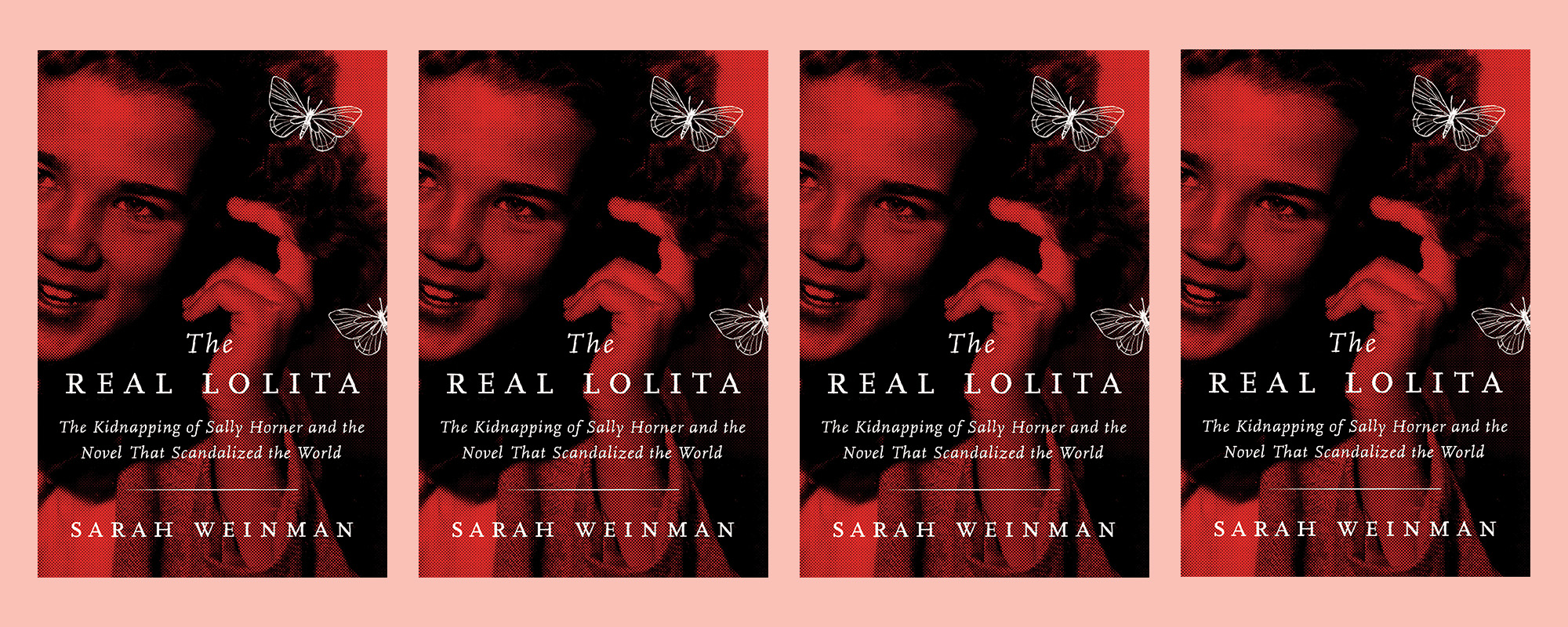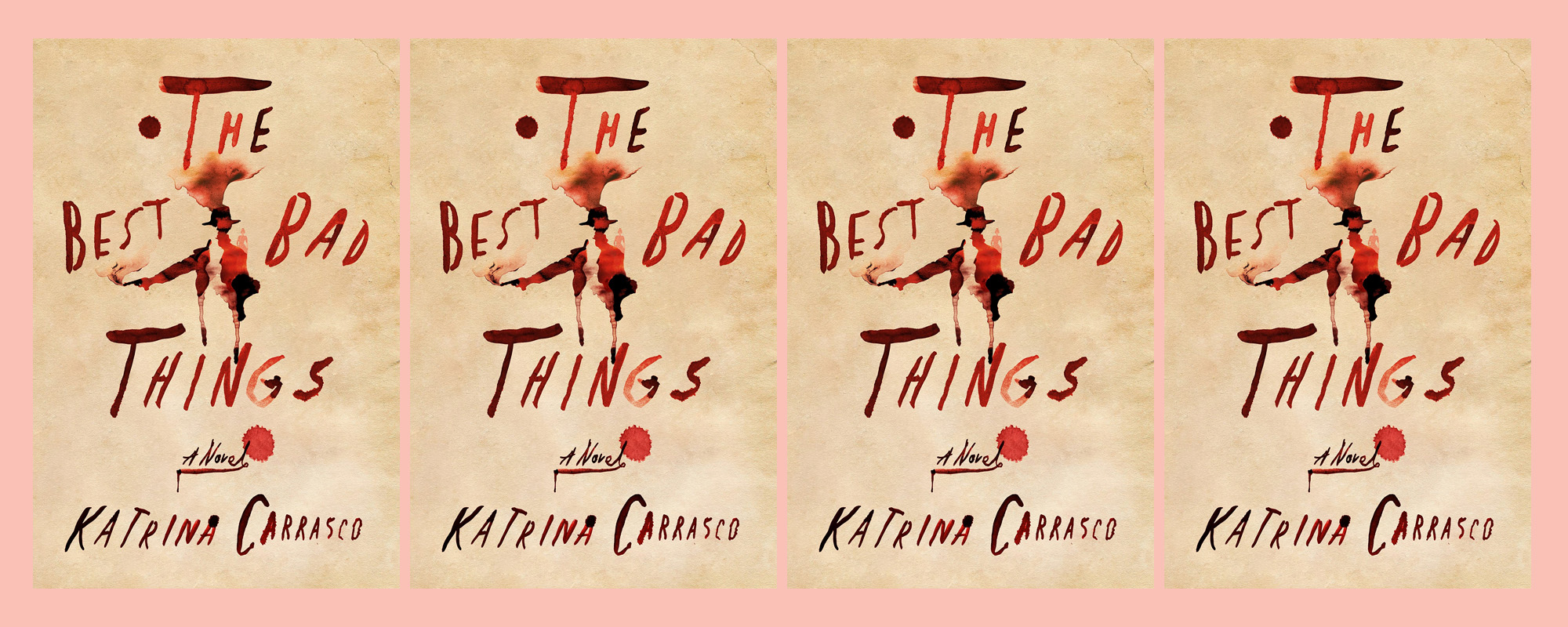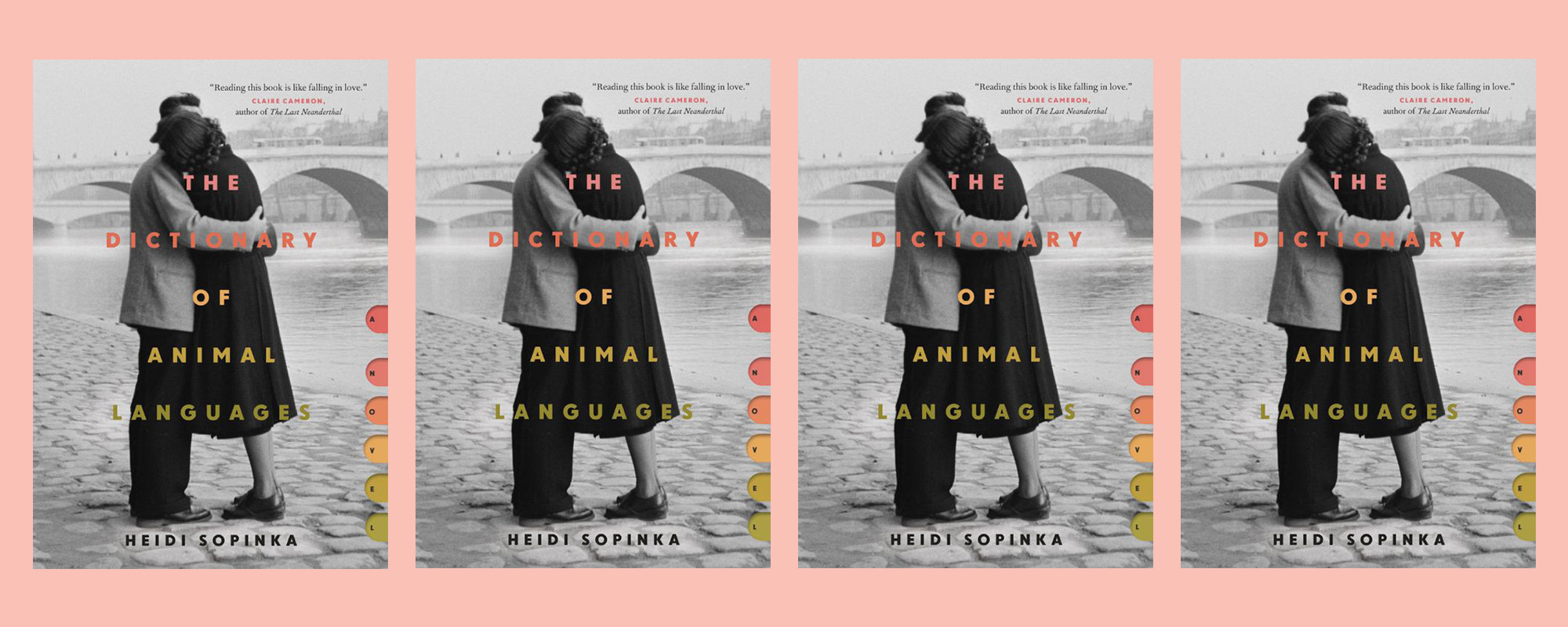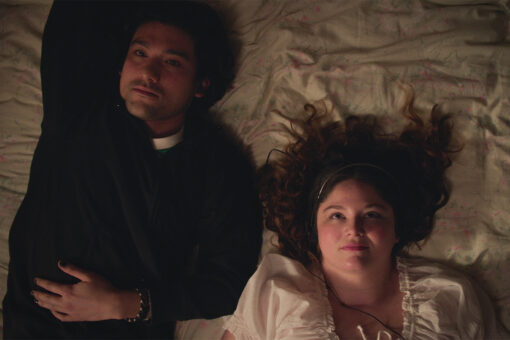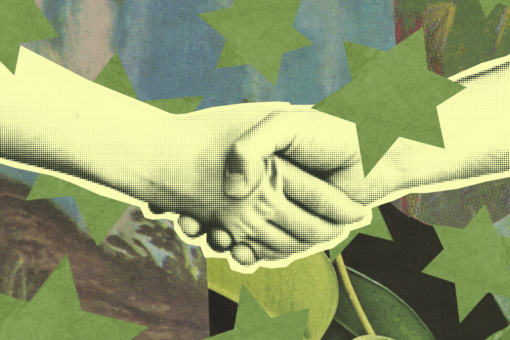We shared our 18 favorite books for summer, and now we turn to the best season of the year: fall. Autumn. Halloween movie watching time. Midterm season. Whatever you want to call it, it is the perfect time to curl up with a good book.
So, we rounded up 18 new books coming out this fall that we’re pumped about (in no particular order). There’s something for everyone, we promise.
1. Ruth Bader Ginsburg: A Life by Jane Sherron de Hart (October 2018)
This is the first biography of Ruth Bader Ginsburg. (At least the first comprehensive one that she’s approved of!) De Hart interviewed RBG, her husband, her kids, her friends, and her colleagues; according to the Amazon description, “At the heart of her story and abiding beliefs—her Jewish background. Tikkun olam, the Hebrew injunction to ‘repair the world,’ with its profound meaning for a young girl who grew up during the Holocaust and World War II.” It sounds amazing, and the perfect complement to the RBG documentary that premiered this year, and we cannot wait. (Also, this biography feels maybe a bit more accurate than the upcoming biopic.)
Read if you’re into: This is obvious, right? READ IF YOU’RE INTO RBG. Get it here. And get your scrunchies ready.
2. Come With Me by Helen Schulman (November 2018)
Inspired by Sheryl Sandberg, Schulman explains, “A friend invited me to see the Google campus,”and I was so taken by how crazy it was. I thought I might want to write about someone like Sheryl Sandberg, who’s a mom working with all these baby geniuses. The idea of the multiverse theory in physics was wild and new to me, but then my 11-year-old son informed me, ‘Everyone knows that, Mom.'”
The story focuses on Amy, a mom who works for a 19-year-old genius who created an algorithm that may allow people access to their multiverses, and Dan, her husband, an unemployed journalist who travels to Fukushima, Japan after the devastating tsunami and nuclear disaster in 2011.
Read if you’re into: family dramas, romance, the tech world. Get it here.
3. Severance by Ling Ma (August 2018)
What would a millennial do in the apocalypse? Ling Ma sets out to answer that question in this novel. The protagonist, Candace Chen, works for a publishing company — producing Bibles — and as her colleagues start dying of the mysterious Shen Fever, she survives… and keeps going into work. I loved this summary from NPR‘s review of Severance: “It’s a stunning, audacious book with a fresh take on both office politics and what the apocalypse might bring: This is the way the world ends, Ma seems to be saying, not with a bang but a memo.”
Read if you’re into: dystopias, horror stories, critiques of capitalism, and end of the world stories. Get it here.
4. Passing for Human: A Graphic Memoir by Liana Finck (September 2018)
Do you follow Liana Finck on Instagram? What are you doing if you don’t?
The Instagram star, who we spoke to last year, told us, “I was very self-conscious starting to draw cartoons to submit to the New Yorker, since I felt like such an outsider there, and the self-consciousness held me back a few years. But I’m doing fine now.” Her memoir is what she calls a “neurological coming-of-age story,” and it’s about her searching for self-understanding and self-acceptance. We can’t wait.
Read if you’re into: graphic memoirs, vulnerability. Get it here.
5. The Real Lolita: The Kidnapping of Sally Horner and the Novel That Scandalized the World by Sarah Weinman (September 2018)
Did you know Vladimir Nabokov’s Lolita was based on a true story? I didn’t either, until reading Jewish crime writer Sarah Weinman’s fantastic book about the real girl — Sally Horner — behind the tale. I had the chance to speak with Weinman about her book, and she explained, “I think it’s incredibly important for us to know what influence Sally’s story had, and to some degree, other real life stories had, on Lolita. Because no work of art can be separated wholly from influence.” An important read.
Read if you’re into: true crime, Nabokov, untold histories. Get it here.
6. The Proposal by Jasmine Guillory (October 2018)
Guillory’s first novel, The Wedding Date, was on our summer book list. This is the delightful follow-up. (You don’t have to read the first to read this sequel.) The plot is corny rom-com: boy 1 proposes to girl at baseball game, girl rejects boy 1 publicly, and boy 2 rescues girl from very awkward situation. Boy 2 and girl fall in love. But, and read this next sentence in a Rebecca Bunch voice, it’s a lot more nuanced than that.
Read if you’re into: romance! Feminist novels! Get it here.
7. Ponti by Sharlene Teo (September 2018)
Sharlene Teo’s debut novel, set in Singapore, takes its title from a monster in Malay folklore, the pontianak. The pontianak — ponti for short — is a female vampire ghost who devours men (duh!). But there’s nothing really supernatural about Teo’s novel: Instead, it’s about the brief but intense friendship of two 16-year-old girls (Szu and Circe) in 2003 Singapore. The book alternates perspectives between Szu in 2003, Szu’s mom Amisa in the 1970s, and Circe in 2020. Amisa, in her youth, had starred in a series of cult horror films as the titular pontianak monster. She is now dying of cancer, and Szu struggles with losing her mom and finding her way in the world.
Read if you’re into: horror movies, female friendships. Get it here.
8. The Truth About Animals: Stoned Sloths, Lovelorn Hippos, and Other Wild Tales by Lucy Cooke (April 2018)
One of the hosts on one of my favorite podcasts, Keep It, recommended this book. I immediately put it on hold at the library… and waited a long time. It was worth the wait. Cooke’s book is divided into 13 chapters, each focused on a different animal, and she expertly writes about how humans perceive the animal versus the reality of the animal.
In an essay for the New York Times Book Review, Zoë Lescaze writes that Cooke “nimbly pings between arcane, medieval and modern sources, assembling a cast of characters that includes unhinged aristocrats, ill-fated adventurers, Thomas Jefferson, Julius Caesar, Sigmund Freud, the Colombian drug lord Pablo Escobar, the Danish astronomer Tycho Brahe and more than a few mad scientists.” It’s remarkable the breadth and depth of this book.
Read if you’re into: Honestly, this book is for everyone. But particularly fans of fun facts. Get it here.
9. The Silence of the Girls by Pat Barker (September 2018)
Pat Barker tells the tale of The Iliad from the perspective of the captured women. Barker was struck by how, at the start of Homer’s epic poem, “the girls, who say nothing at all, are simply transferred like parcels. It seemed important to me to address that and try to fill in that silence.” The main character is Briseis, the woman given to Achilles as a slave, and she narrates the majority of the book. In Emily Wilson’s review in The Guardian, she writes, “Barker’s novel has a very clear feminist message about the struggle for women to extricate themselves from male-dominated narratives. In the hands of a lesser writer, it could have felt preachy.”
Read if you’re into: Madeline Miller’s Circe, Greek mythology, feminist retellings of history, reclaiming narratives… Get it here.
10. She Would Be King by Wayétu Moore (September 2018)
Wayétu Moore’s debut novel, published by indie press Grawolf Press, is set in Liberia. Following three characters — Gbessa, a girl banished from her West African village because they think she’s a witch, June Dey, the son of a Virginia slave, and Norman, the son of a white British scholar and a Jamaican slave — Moore expertly interweaves their tales and Liberia’s history. (Liberia, for those not history-inclined, began as a settlement of American slaves and Afro-Caribbeans.) As Publisher’s Weekly points out, “Moore uses an accomplished, penetrating style—with clever swerves into fantasy—to build effective critiques of tribal misogyny, colonial abuse, and racism.”
Read if you’re into: fantasy, magic realism, history. Get it here.
11. Your Duck Is My Duck by Deborah Eisenberg (September 2018)
Eisenberg’s first book in 12 years features six short stories (five of which have been previously published). As Kirkus writes, “The stories here are long, most more than 30 pages, and they take their time in getting to the point. But that’s OK; in fact, it’s the whole pleasure of reading her, the assurance that there is no quick fix, no easy resolution, that things are as muddy, as complicated on the page as they are in the world.” She’s a brilliant writer, so we can’t wait to read this.
Read if you’re into: satire, short stories. Get it here.
12. Desire, Power, and Topping the Patriarchy by Jill Soloway (October 2018)
Jill Soloway, the creator of Transparent, writes about their experience as a nonbinary genderqueer creative person in Hollywood and as an activist. Marketed as a “patriarchy-toppling emotional and professional journey,” it lives up to the tagline. There’s a lot to love about Soloway’s memoir, but it’s the little anecdotes (“My mom had evolved over the years into a pretty tough-ass little grandma. She even has a tattoo. Like any good Jewish mom, it’s of her kids’ names.”) that really give the reader insight into Soloway’s world.
Read if you’re into: desire, power, and toppling the patriarchy? Ha. But seriously, read if you’re into reading about identity, sexuality, Hollywood, and Transparent. Get it here.
13. The Best Bad Things by Katrina Carrasco
The protagonist is named Alma!! This should be reason enough!! (We’re half joking.) But seriously read the premise:
It is 1887, and Alma Rosales is on the hunt for stolen opium. Trained in espionage by the Pinkerton Detective Agency―but dismissed for bad behavior and a penchant for going undercover as a man―Alma now works for Delphine Beaumond, the seductive mastermind of a West Coast smuggling ring.
How fun does that sound? (It kind of reminds me of another queer historical novel, Jordy Rosenberg’s Confessions of the Fox, which I loved.)
Carrasco explains that in her writing, she “explore[s] the performance of gender, sexuality, and social roles; queerness; the gray space of the ‘other’; passing; and the strange experience of inhabiting a human body.”
Read if you’re into: thrillers, mysteries, spies, crime fiction, queer stories. Get it here.
14. The Dictionary of Animal Languages by Heidi Sopinka (September 2018)
The Dictionary of Animal Languages is partly inspired by the life of artist Leonora Carrington, the English-born Mexican artist, surrealist painter, novelist, and founder of the Women’s Liberation Movement in Mexico. Sopinka spent several days with Carrington when she was 92, and these interviews form the basis of her 92-year-old fictional narrator, Ivory Frame. Yet, “Sopinka’s story never trips over into the world of fanciful whimsy that so many of the tales about Carrington inspire. Indeed, the young Ivory is a much more reserved person than her real-life inspiration. Or perhaps the stories that abound do Carrington a disservice.”
Read if you’re into: badass ladies. Get it here.
15. The Golden State by Lydia Kiseling (September 2018)
As The New Yorker review of The Golden State begins: “For a literary form with such mythic power, the road novel has proved to be a somewhat inflexible genre. Road-trip stories hit all the sweet spots of American delusion: the search for self-determination, sublime landscapes, loosened inhibitions, random encounters with danger and pleasure.” Yet as the review goes on to detail, Kiesling’s debut novel, The Golden State, is a fresh take on the road novel. It’s about a mom, Daphne, setting out on a road trip with her toddler. As The New Yorker points out, “The result is less an untroubled analogy between the landscapes of motherhood and the American West than an invitation to think more deeply about how limited our canonical literary imaginings of each have been.”
Read if you’re into: books about motherhood, the American West, road trip books. Get it here.
16. The Library Book by Susan Orlean (October 2018)
You may know Susan Orlean from The New Yorker, or her books Rin Tin Tin, The Orchid Thief, and Adaptation (the movie about her/her book starring Meryl Streep!). This fall, she’s coming out with an investigative look into the 1986 Los Angeles Public Library fire, which destroyed and/or damaged over a million books. Orlean combines her “life-long love of books and reading” with “the fascinating history of libraries and the sometimes-eccentric characters who run them” and the story of that fateful day in L.A.
Read if you’re into: investigative journalism and libraries. Get it here.
17. Melmoth by Sarah Perry (October 2018)
Sarah Perry’s first novel, The Essex Serpent, was set in Victorian England and featured a winged serpent said to haunt a village. But what I loved about it was that it was so much more than just a monster story — it was a feminist tale about a woman reclaiming her life after the death of an abusive husband. Melmoth, the follow-up, similarly focuses on a strong woman and a monster. Only this time, it’s set in the present day.
The monster, Perry explains, is purposefully female: “All my life, I’d wanted to write a great monster – my Frankenstein or Dracula – but I wanted mine to be a woman. I remember feeling really incensed [as a child] that there wasn’t a titular female villain.”
Perry, who has Graves disease, an autoimmune condition, said, “I genuinely don’t really remember writing the book” because of the painkillers and hospital visits. Yet — out of this nightmare came Melmoth, which Perry hopes will “distress people.” Is it possible to be scared and excited for a book?
Read if you’re into: mythical creatures, fairy tales, mysteries, and gothic horror. Get it here.
18. All You Can Ever Know by Nicole Chung
I love Nicole Chung’s twitter feed (@nicole_soojung) — as do 47,000 other people. They’re there, as am I, for her writing. So her memoir, about growing up adopted in a white family in Oregon, is very anticipated. As she wrote in 2016, “I never read any books by and about adopted people when I was growing up. And yet so many of the adoptees I know today are natural storytellers. I sometimes wonder if this is because we never had a choice: We have been explaining our lives, our families, and our histories for as long as we can remember.”
Read if you’re into: memoirs, family stories, and exploring identity. Get it here.
Are you still with us? A bonus recommendation (even though it’s a male author, we’ll allow it):
The Flame by Leonard Cohen (October 2018)

The final work from Leonard Cohen, this book is a collection of poems, drawings, lyrics, and his notebooks.
Read if you’re in— ah, let’s stop there. Everyone’s into Leonard Cohen. Get it here.
Disclosure: This post contains Amazon affiliate links, which means we may receive a commission if you click a link and purchase something. While clicking these links won’t cost you any extra money, they will help us keep this site up and running. Thanks!





